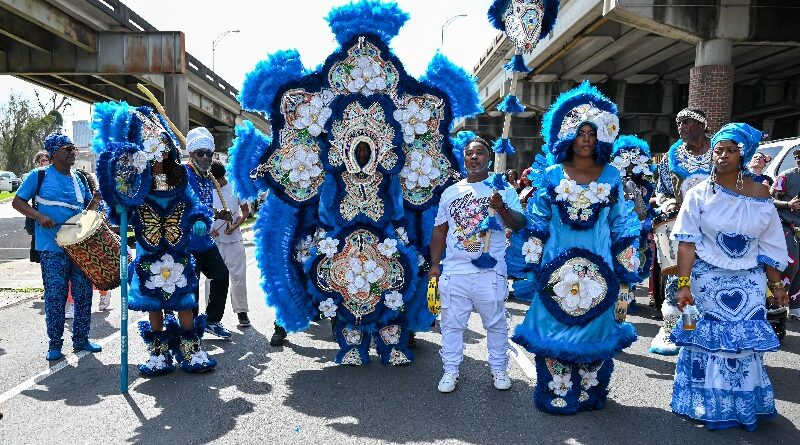Editor’s Inbox: Mustangs, Dinos, and Mardi Gras
Though already a few days into the Lenten season, I wanted to thank SMU’s Monifa Thomas-Nguyen for sharing a bit of belated Mardi Gras with a twist of Pony paleontology.
I’m a Texas native who enjoys reminders of 11 years spent in Louisiana.
There, even someone who avoided the Fat Tuesday parades in New Orleans couldn’t escape carnival season’s sights, sounds, and tastes.
The season in Louisiana begins as soon as people return to work in the new year.
Office Christmas trees get purple, green, and gold makeovers so they can linger a few weeks longer as Mardi Gras trees.
Don’t bother with any New Year’s dieting resolutions until Ash Wednesday because the king cakes begin arriving in the office on Jan. 2.
The colorful, often cream-filled cinnamon roll-like pastry typically comes with a plastic baby inside – a grand gimmick that ensures another cake soon – if not tomorrow – because whoever gets the piece with the choking hazard (I mean baby) must bring the next one.
Parades and krewe balls happen everywhere, so pay attention. It’s better to catch plastic beads than be hit by them.
A few days after going to work for the Town Talk in Alexandria, I watched the Grambling State University marching band and Super Bowl MVP Doug Williams parade by.
After I moved to Baton Rouge, I checked out the annual Spanish Town Parade with its off-color merciless mocking of politicians, former LSU coaches, and Britney Spears.
Unlike SMU paleontologist Louis L. Jacobs, I’ve never visited New Orleans on Fat Tuesday to see one of the exquisite suits of Chief Shaka Zulu, an internationally recognized master of Black Masking suit design. The art form, specific to New Orleans, originated with the city’s indigenous and African culture.
Jacobs was there on Feb. 21 because of the unusual role he and Michael J. Polcyn played in inspiring this year’s suit.
The SMU paleontologists and others found Cretaceous Era large, marine reptile fossils that eventually went on exhibit at the Smithsonian’s National Museum of Natural History. There, they made an impression on Chief Shaka.
The fact scientists also have found Mosasaurs – the giant sea creatures featured in the “Sea Monsters Unearthed: Life in Angola’s Ancient Seas” exhibit – in Louisiana provided a compelling connection.
“From Angola to Louisiana, history is repeating itself,” Chief Shaka said, noting the slave trade in the 18th and 19th centuries and his wife’s Angola ancestry.
Jacobs and Polcyn provided scientifically accurate 3-D images of large mosasaur teeth for the suit.
Jacob’s verdict after seeing the finished product: “Zulu’s suit, with its prehistoric fossil sea monsters, its Louisiana magnolia blossoms, and its allusion to slavery, brings our Earth history, human history, and American history together in the art and culture of New Orleans.”





